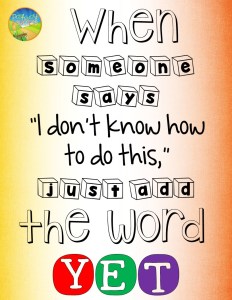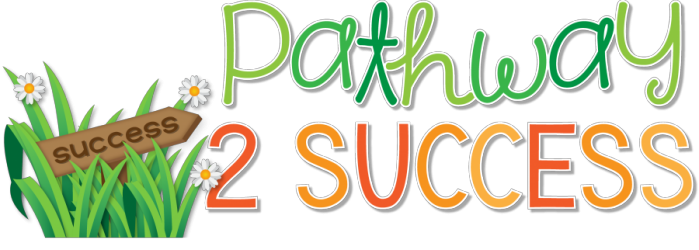
Having a growth mindset means understanding that you can develop your own strengths and weaknesses through hard work, dedication, and grit. By teaching students to have a growth mindset, kids and young adults can better learn to work through challenges and overcome adversity in their lives.
The opposite of a growth mindset is a fixed mindset. With a fixed mindset, people believe that you are who you are, and that doesn’t change. It’s the difference between the student who says, “I’m just bad at math” (fixed mindset) and the student who says, “This is going to be challenging, but I’ll work through it and learn it as I go” (growth mindset). By promoting and encouraging a growth mindset, adults can help kids and young adults to step outside their comfort zones, push themselves to their limits, learn from difficulties, and ultimately find success.
Having a fixed mindset often leads to giving up on tasks, feeling poorly about oneself, and avoiding challenges. On the other hand, having a growth mindset encourages students to try new things, embrace challenges, and develop strong confidence.
Here are some ways you can promote a growth mindset with kids and young adults:
1. Teach the difference between a fixed and growth mindset. Give explicit instruction to kids about growth and fixed mindsets, explaining the positives associated with adopting a growth mindset. Focus on teaching how having a growth mindset can really help kids feel better, do better, and succeed.
2. Highlight examples of growth mindset in your classroom. Specifically praise kids when they do something with a growth mindset. You might say, “Last week I heard you say you were not a good artist, but you really worked hard on your collage and it came out very artistically”, or “I saw you sitting with your head down during morning work time for the first minute. I love that you pushed forward and finished your work even though it was challenging for you to get started.” Positive feedback goes a long way when it is specific.
3. Give time for kids to talk about having a growth mindset. Use practice examples, whether they are made up or real life examples from each student’s life. Use Growth Mindset Task Cards to practice a growth mindset in all areas of life: at home, school, during activities, with friends, and within our own belief systems.
4. Encourage risks and highlight that mistakes are learning experiences instead of failures. When a child or young adult does make a mistake, avoid making him or her feel bad about the mistake. Instead, encourage personal growth by asking them to identify what they’ve learned from the challenge.
5. Help kids set short term goals. Find out what goals kids want to accomplish in the next few months or within the year. Focus on one main area, whether it is academic, social, or personal. Help kids set a realistic SMART goal and help them come up with specific strategies for how they can accomplish that goal.
6. Conference with students about their goals and progress. Take time every two weeks to “check in” with kids and their goals. Make it a time to assess how much progress has been made and what the student has learned. You can look at what didn’t work but really focus on what DID work. Use that positive momentum to keep the progress going. Also, recognize that it’s okay if students tweak their goals as they go. Setting regular times to check in with goals really helps kids stay on track and learn that achieving that goal is possible.
7. Discuss people and celebrities who achieved success with a growth mindset. There truly are so many examples in all different areas of life. Michael Jordan was cut from his high school basketball team but his mother talked him into not giving up, so he continued to practice and get better. The Beatles were turned down by several record companies because some just didn’t like their sound. Oprah had a boss who told her she wasn’t fit for television. The list goes on and on! You could even use this as a research project in your classroom so that each student can report back about someone who overcame adversity and used a growth mindset to succeed.
8. Give challenging tasks. Brainteasers, riddles, and math problems are an excellent way to push kids to try challenging problems without giving up. When kids want to know the answer, don’t give it right away! Allow for plenty of time to go back and think about the problem. This encourages the idea that sometimes you don’t get all the answers, and you must work through challenges on your own to find out.
9. Use literature that shows examples of perseverance. You can use them within your language arts instruction or just as a read aloud for fun. From short children’s books to longer chapter books, you can find many different texts that promote a growth mindset. Some shorter books include: Ish by Peter H. Reynolds, The Most Magnificent Thing by Ashley Spires, and Extra Yarn by Mac Barnett. One longer selection is Esperanza Rising by Pam Munoz Ryan. Biographies also work great to teach growth mindset, as they highlight people who have persevered through serious challenges.
 10. Use the word “yet”. When someone says, “I don’t know how to do this”, just add the word “yet”. Constantly reminding this encourages the idea that most things are possible with hard work, persistence, and time.
10. Use the word “yet”. When someone says, “I don’t know how to do this”, just add the word “yet”. Constantly reminding this encourages the idea that most things are possible with hard work, persistence, and time.
Helping kids and young adults to develop a growth mindset takes time, but it’s worth it in the end. You can see kid’s perceptions about themselves slowly begin to change from, “I can’t do this” to “How CAN I do this?” and then eventually, “I know I can do this”.







Leave a Reply